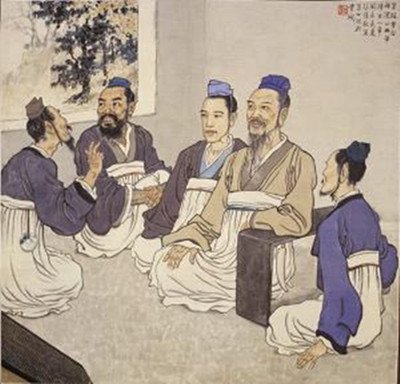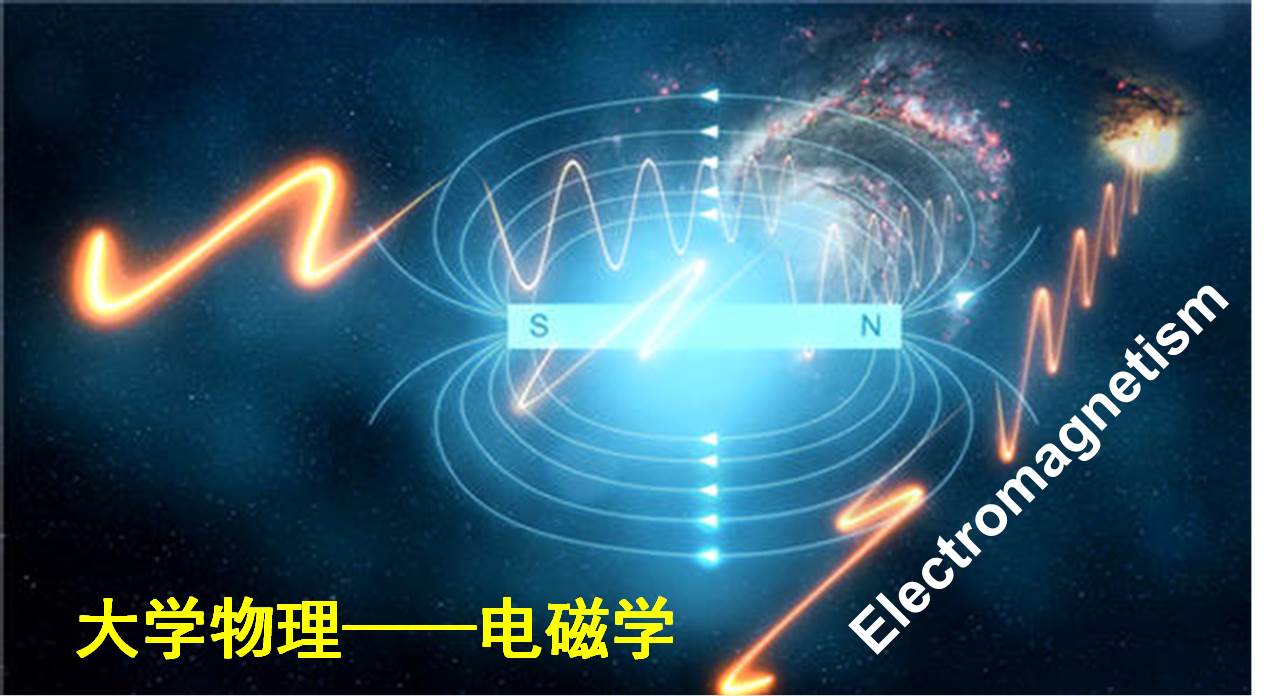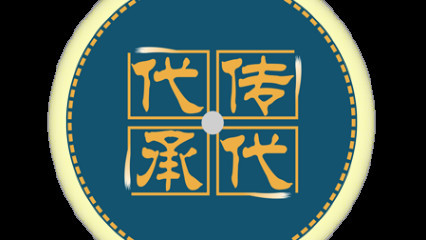
当前课程知识点:Culture and Tourism > Week 1: Cultural Tourism: Definitions and Concepts > 1.2 Cultural Heritage-1 > 1.2.3 Criterion(ii): exhibit important interchange of human value
返回《Culture and Tourism》慕课在线视频课程列表
返回《Culture and Tourism》慕课在线视频列表
在这一节中,我将继续讨论标准ii
并给出一些例子来说明哪些类型的站点可以列在这个标准中。
标准2,评价展览是一个重要的人类价值交换,
将一段时间内或在一个文化世界的区域,
在体系结构或技术的发展,不朽的艺术、
城镇规划或景观设计。
这一标准的关键词是“人类价值的交换”。
ICOMOS评估的是地产的物理资产,
在建筑、技术、不朽的艺术方面,
城市规划或景观设计相关的
思想的交流——这可以用几种不同的方式来解释。
因此,该财产可能是从另一地区或地区
引进的一种思想或概念的体现,
它改变了原地区、接受地区或其他地区随后的创造力;
或者,本身可能通过影响
其他领域的鼓舞人心的想法促进了人类价值观的交流;
第三,这里可能有一个双向的思想流动,
这个属性显示了某种文化融合或局部适应,
在某种程度上可以被认为是象征性的。
在所有情况下,人类思想或影响的交流
都需要引起反应,
且这方面影响可以说是杰出的,
不论是对当时和(或)随后的人或社会。
在很多财产中,影响或交换指的是
重要思想的有形传播,在艺术史、
建筑史、城市设计史或技术史中,
所有这些都体现在财产的属性中。
由于人类社会和文化之间的交流是普遍的,
这个标准要求这种交流和价值观/影响
对接受者文化的影响是实质性的和重要的。
一个次要的文化方面的转移,
或一个影响不大的价值的转移是不够的。
此外,被交换的价值或影响
必须以某种方式体现在指定的财产中,
通过体现在财产的属性中。
人类价值或影响力的交换
不体现在财产中,这不是一个好理由。
使用此标准来证明保存良好的类型属性示例
通常是不合适的,最好在其他标准下进行讨论。
我来举几个例子。
第一个是巴黎的凡尔赛宫花园。
凡尔赛宫殿花园的建立是经历了几代
建筑师、雕塑家、画家、景观建筑师,
代表一个多世纪以来,欧洲的皇室居住的完美模型,
建筑计划和雄伟的景观的组成
密切符号作为装置的许多战斗室
以及室内装饰的公寓。
1979年,凡尔赛宫被列为世界文化遗产。
但是我会给你们一些,关于标准一的反馈
因为它也是标准一的。
标准一,凡尔赛宫的象征构成了一种独特的艺术实现,
不仅因为它的位置,还因为它的质量和独创性。这
是天才的设计。
这和标准一有关,链接到上一节内容。
但是标准二,我将在这一节中强调
凡尔赛宫对整个欧洲的影响
从17世纪末到18世纪末。
对凡尔赛宫的推崇影响了
汉普顿宫、俄罗斯和其他西欧国家。
所以,这些图片显示,你知道,在凡尔赛宫建筑的内部,
你知道,你可以看到这个华丽的卧室
和法国餐厅代表了巴洛克和这种类型的风格。
你也可以从这些图片中看到凡尔赛宫
不仅有这些,你知道,宫殿,还有很大的花园,
还有中国园林里的一些小花园。
还有,这些花园非常精致。
我仍然记得当我参观凡尔赛宫的时候。
不仅是花园和建筑让我沉浸其中,
还有这些小花园。
也许我可以分享给你一些经历。
凡尔赛宫有一家餐厅的烤鸭很好吃,
你一定要去尝尝。
另一个例子是英国的布莱尼姆宫。
牛津附近的布伦海姆宫
是坐落在一个由著名景观园艺师“能力”布朗设计的浪漫公园。
它是由赠送给约翰·丘吉尔的,
由英国人马尔伯勒一世公爵所赠。
约翰·丘吉尔实际上是西方教会的答案,
西方教会在第二次世界大战中非常有名在1704年
法国大战中,赢得了法国战争。
布伦海姆宫建于1705年至1722年之间
风格兼收并蓄、回归民族根源,
是18世纪王室住所的完美典范。
在标准二下,布莱尼姆宫的定义是,
拒绝法国古典风格的模型,
宫殿和公园说明英国浪漫主义运动的开端,
特点是折衷主义的灵感,
回到国家资源和自然的爱。
布伦海姆对建筑和
空间组织,在18和19世纪,
对英国和国外都有很大的影响。
嗯,你可以看到布伦海姆宫的景色。
花园代表了英国人关于
文化和自然结合的观点,
但是你可以从花园中看到,虽然它很自然,
但是和我给你的
下一个例子很不一样。
它是关于苏州的古典园林。
第三个苏州古典园林的例子,
我想谈的是在中国。
园林的设计追求的是再现自然景观的缩影,
这一点在历史名城苏州的九大园林中得到了最好的体现。
它们被普遍认为是该流派的杰作。
从11世纪到19世纪,
园林反映了自然美的深远的形而上的重要性,
在中国文化中,尤其在小尺度的设计中。
标准(一):苏州古典园林受
中国传统工艺和艺术的影响,
以中国传统绘画的写意手法首次引入,
体现了中国传统文化的精致。
这种艺术完美的体现为他们赢得了
中国古代最具创造力的园艺杰作的美誉。
标准(ii)在这一节中,
在2000多年的时间跨度内,为这些特殊类型的花园形成了一种独特
但系统的园林绿化形式。
其规划、设计、施工技术
以及艺术效果对中国
乃至世界园林绿化的发展产生了重大影响。
古典园林也属于标准(iii)和标准(iv)。
因此,标准(三),苏州古典园林首先起源于
中国古代知识分子的愿望与自然和谐,
同时培养他们的气质。
他们是中国古代知识分子智慧
和传统的最佳遗存。
标准(四),苏州古典园林是
长江三角洲东部地区园林设计中
11—19世纪最生动的文化标本。
其所体现的哲学、文学、艺术和工艺反映了
在建筑、园艺和手工艺品中
反映了这一时期社会、文化、
科学和技术发展的不朽成就。
我将在下面的章节中讨论这个标准(iii)和标准(iv)。
同样,根据标准(v),这些古典苏州园林也是
中国传统民居与巧妙设计的
和谐关系的杰出范例,
尤其是人与自然的关系方面。
它们的生活方式、礼仪和习俗。
展示了11至19世纪长江三角洲东部地区的样貌。
这是第四部分的结尾,我讲的是标准(ii)
并在上述三个例子的基础上,
结合苏州案例的最后一个例子,讨论另一个标准,
我将在下一节中讨论。
谢谢大家。
-1.1 Introduction course outline and UNESCO World Heritage Program
--1.1.1 Introduction of culture and tourism course outline
--1.1.2 Introduction of UNESCO World Heritage Program(1)
--1.1.3 Introduction of UNESCO World Heritage Program(2)
-1.2 Cultural Heritage-1
--1.2.1 The meaning of culture heritage
--1.2.2 Criterion(i): masterpiece of human creative genius
--1.2.3 Criterion(ii): exhibit important interchange of human value
--1.2.4 Criterion(iii): bear a unique or at least exceptional testimony
--How can the public understand the importance of heritage?
-1.3 Cultural Heritage-2
--1.3.1 Criterion(iv): an outstanding example in human history
--1.3.2 Criterion(v): represent a culture or human interaction with environment
--1.3.3 Criterion(vi): associated with living traditions of outstanding universal significance
-1.4 Natural Heritage
--1.4.1 Natural heritage features, formations and criterions
--1.4.2 Cases studies of natural heritage
--Cultural landscape meanings: The case of West Lake, Hangzhou, China
--How to access heritage of your hometown?
-2.1 Mixed Culture and Natural Heritage
--2.1.1 Mixed heritage operational guidelines and cases (1)
--2.1.2 Mixed heritage operational guidelines and cases (2)
--2.1.3 Mixed heritage operational guidelines and cases(3)
-2.2 Authenticity, Integrity and Cultural Routes
--2.2.1 How to determine authenticity and integrity
--2.2.2 Heritage routes and heritage canals (1)
--2.2.3 Heritage routes and heritage canals (2)
--What do you think about cultural heritage categories?
-2.3 Special Heritage and Sustainable
--2.3.1 Physical remains of the history of technology and industry
--2.3.2 Transboundary Heritage, Serial Heritage, Serial/Transnational Heritage
--2.3.3 Intangible cultural heritage
--2.3.4 UNESCO World Heritage and Sustainable Tourism Programme
--Recovering the Memory of Ourselves for the Sustainable Cites
--Week 2 quiz
--What do you think about cultural heritage categories?
-3.1 The Australia’s Heritage System and Sydney Opera House
--3.1.1 The Australian Heritage System
--3.1.2 Case Study: The Sydney Opera House
-3.2 Role of the ISCCL and Cultural Landscape (1)
--3.2.2 Uluru-Kata Tjuta National Park
--3.2.3 Honghe Hani Rice Terraces
-3.3 Role of the ISCCL and Cultural Landscape (2)
--3.3.1 West Lake cultural landscape (1)
--3.3.2 West Lake cultural landscape (2)
-3.4 Rural Landscapes as Heritage
--3.4.1 ISCCL Principles Concerning Rural Landscapes as Heritage
-3.5 Case Study: Mongolian Altai
--3.5.1 Nature Culture Integration & the Mongolian Altai(1)
--3.5.2 Nature Culture Integration & the Mongolian Altai(2)
--Week 3 quiz
--Discussion: What do you think is the role of ISCCL?
-4.1 Introduction of the Meaning of 'landscape’
--4.1.1 Brief introduction of landscape and culture
--4.1.2 The conceptual framework of cultural landscape
-4.2 Landscape Values
--4.2.1 The word “landscape” itself and differences in Western, Eastern
--4.2.2 Cultural significance for heritage source
--Discussion: What do you think the cultural landscape attracts you?
-4.3 Reading the Landscape: Identification and Assessment
--4.3.1 Planning model for heritage conservation management policy
--4.3.2 Cultural landscape resources evaluation steps
--Article: Cultural mapping: Intangible values and engaging with communities with some reference to As
-4.4 Case Study: Wingecarribee Historic Landscape
--4.4.1 Case study:Wingecarribee historic landscape study(1)
--4.4.2 Case study:Wingecarribee historic landscape study(2)
--Week 4 quiz
--Discussion: What should we do to strengthen the protection of cultural landscape?
-5.1 Indigenous Tourism
--5.1.1 Indigenous tourism background
--5.1.2 World heritage and indigenous peoples
--5.1.3 Tourism issues at Canadian indigenous world heritage sites
--Discussion: What challenges indigenous World Heritage faces?
--Article: State conceptions of indigenous tourism in Chile
-5.2 Case Study and Conclusion: Great Expectations for Tourism
--5.2.1 Case study Pimachiowin Aki
--5.2.2 Conclusions:Great Expectations for Tourism
--Disussion: Do you have any experience of indigenous tourism?
--Week 5 quiz
-6.1 The Definition of Heritage in Heritage Performance Study
--6.1.1 The definition of heritage in heritage performance study
--6.1.2 Heritage performance and meaning making
--6.1.3 Two key issues emerging from qualitative study
-6.2 Heritage Performance - Evidence from Australia, England and USA
--6.2.1 Heritage performance - reinforcement
--6.2.2 Heritage Performance - inter-generational communication and social values
--6.2.3 Heritage performance - recognition and respect
--6.2.4 Heritage performance - education
--Article:Theorizing museum and heritage visiting
-6.3 The Conclusion of Heritage Performance
--6.3 The conclusion of heritage performance
--Week 6 quiz
--Discussion: What kinds of heritage performances have you learned in this week?



